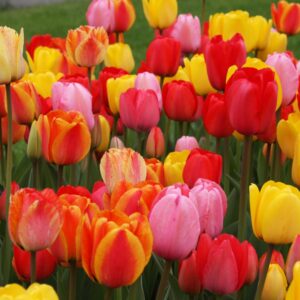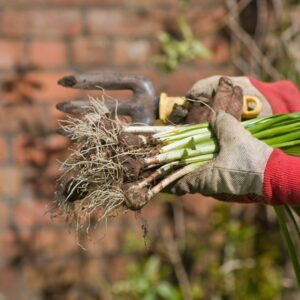Gardening has no rules. Experimenting and learning through trial and error is common practice among garden enthusiasts. But gardening does have guidelines and suggestions for what will produce the best result. When transplanting spring bulbs follow these guidelines below to learn when the best time to transplant spring blooming bulbs is.
Transplanting Spring Blooming Bulbs
Reasons to Transplant Spring Blooming Bulbs
There are a variety of reasons to transplant spring-blooming bulbs. Maybe you moved into a new house and the bulbs were there when you arrived and you would like them someplace else? Perhaps you are moving from one house to the next and want to take the bulbs with you?
A common reason to transplant bulbs is that the bulbs have stopped producing flowers. In this case, they should be dug up, divided, and transplanted elsewhere. This is very common with spring bloomers like daffodils and iris.
Perhaps the bulbs have outgrown their space or were planted in a location they were not suited for?
No matter the reason, as a flower bulb gardener you will most likely come to a day when you need to transplant spring-blooming bulbs.

What are Spring Blooming Bulbs?
Spring-blooming bulbs are planted in the fall months. They bloom and grow from early spring through early summer. Tulips, daffodils, crocus, allium, bearded iris, hyacinth, fritillaria, Dutch iris, muscari, and squill are the most well-known spring-blooming bulbs.
When to Transplant Spring Blooming Bulbs?
The best time to transplant spring-blooming bulbs is anytime after the bulbs are finished blooming and the leaves have withered.
Transplanting before the bulbs bloom in the spring months will disrupt the bloom cycle and production and result in few to no blooms. If the bulbs are transplanted while the leaves are still fresh and green after blooming this will prevent the bulb from gathering energy for the next season’s blooms. Therefore, late spring, summer, and fall months are all acceptable times to transplant spring-blooming bulbs.
The ideal time is late spring into early summer when the bulbs can easily be located but are finished blooming for the season.
The challenge of waiting to transplant spring blooming bulbs until late summer and fall is that it may be harder to locate the bulbs. Since the foliage will have died back by mid-to-late summer the location of the bulbs should be marked. Use plant labels to mark where the bulbs are so they can be located and transplanted without disturbing other plants.
How to Transplant Spring Bulbs?
Start with a long-handled shovel for digging. You may also want gardening gloves, a wheelbarrow, or someplace to set the bulbs like a gardening mat during the transplanting process. The Corona comfort cultivator clears up the clumps of bulbs and breaks up the soil and is a helpful tool to use for transplanting bulbs and perennials. 
Dig around the foliage of the bulbs or where they are marked in the garden. Start 2-3″ away from the foliage to preserve as many of the roots as possible. Dig up the entire clump of leaves and bulbs. Once the bulbs are unearthed from the ground, shake off any excess soil. If the bulbs are being transplanted because you are dividing and breaking into smaller clumps, use a sharp object to break apart the bulbs.
You may re-plant the bulbs immediately in their new location. Water after the initial transplanting. Note that watering during the summer months is not necessary as they are dormant and prefer to be kept dry, other than natural rainwater.
Storing Transplanted Spring Bulbs
If the bulbs are being dug up and transplanted at a later time they can be stored. Remove as much excess soil as possible. Store the bulbs in a location that is dry, and warm so that the bulbs can ripen. Be sure they are not stored in a location where critters such as chipmunks and squirrels can easily access them. The bulbs can be planted any time from when they are dug up through the fall months before the ground is frozen for the year.
More Spring Blooming Bulb Help
Whether it is questions on transplanting, fall planting of bulbs, or how many bulbs to plant, we are here to help. New spring flower bulb gardeners will find these blog posts below helpful. Creating a beautiful garden of spring blooms takes work and knowledge, but is always worth the effort.


